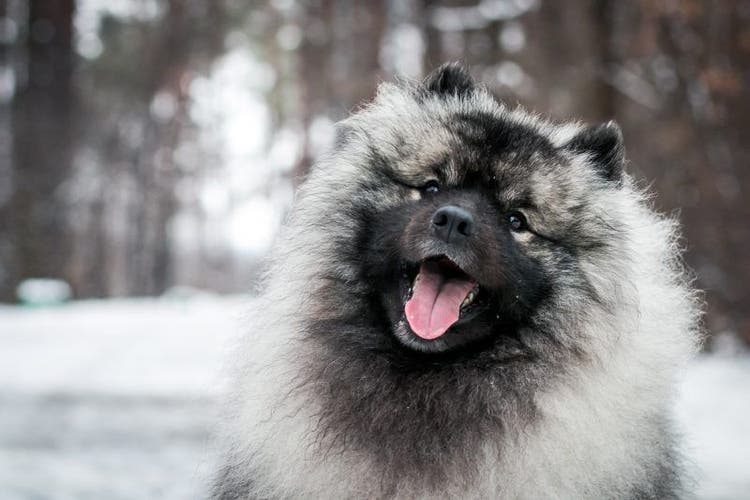
Choosing a Keeshond
The keeshond, pronounced kayz-hawnd, is a stunning dog with a characteristic facial expression. One of the Arctic breeds, the keeshond is a wonderful companion and loves children.
History and Origin
The keeshond (plural keeshonden) is the national dog of Holland and was used to guard the canal boats in the 18th and 19th centuries. It is thought that the keeshond has an ancestry similar to other Arctic breeds such as the Samoyed, Pomeranian and Norwegian elkhound. Prior to the French Revolution, the keeshond was the symbol of the middle class. The leader of the Dutch Patriot revolt was Cornelius de Gyzelaar, nicknamed Kees. The breed associated with him and the Patriot party became known as the keeshond.
In Germany, the keeshond was known as the wolfspitzen. In France, the breed was known as the chien loup and in Italy, the lupini. In 1920, the keeshond was imported to the United States and was eventually accepted by the American Kennel Club as a member of the non-sporting group in 1930.
Appearance and Size
The keeshond is a medium sized dog with a long thick hair coat. The muzzle is straight and the ears are small, triangular and erect. The tail is set high and curled over the back. The facial expression of the keeshond is characteristic of the breed. He should have ‘spectacles’, which are markings and shadings around the eyes with a dark line going from the outer edge toward the lower edge of each ear. The coat around the neck is thick, looking a little like a lion ruff. The legs have thick hair resembling ‘trousers’.
The coat of the keeshond is long and straight with a thick undercoat. The color is a mix of grey, black and cream. Some may be darker or lighter. Each hair is tipped with black.
The adult keeshond stands around 17 to 19 inches at the shoulder and weighs about 35 to 50 pounds.
Personality
The keeshond is a charming, playful and affectionate dog. They always seem to be happy and love life.
Home and Family Relations
The keeshond is an excellent choice for families with children. The breed is affectionate and loyal and loves to participate in all family activities. The keeshond is typically good with other pets, especially if socialized early. They are good watchdogs and bark when strangers approach.
This breed doesn’t require a lot of exercise but does need room to run such as in a fenced yard.
Keeshonden prefer cool climates; they cannot withstand the heat well due to their thick coats.
Training
The keeshond can leave quickly if trained with patience and consistence. They have been trained in obedience and even as trick dogs.
Special Concerns
The long coat of the keeshond requires daily brushing. Twice a year, the coat is shed heavily.
Common Diseases and Disorders
- Hip dysplasia is a malformation of the hip joint that results in pain, lameness and arthritis.
- Hypoadrenocorticism is a disorder affecting the adrenal glands. When underactive, the adrenal glands don’t secrete enough hormones, resulting in illness.
- Diabetes is a disease of the pancreas related to insufficient amounts of insulin production.
- Epilepsy is a seizure disorder that develops between the ages of 2 and 5 years.
- Hypothyroidism results when the thyroid gland does not function adequately. Without enough thyroid hormone, illness can occur.
- Cataracts cause a loss of the normal transparency of the lens of the eye. You may see a cloudy, white color in the pupil, which is normally black. The problem can occur in one or both eyes and can lead to blindness.
- Progressive retinal degeneration is a disease that causes nerve cells at the back of the eye to degenerate. The condition usually begins in older pets and can lead to blindness.
- Glaucoma is a painful and serious condition that causes pressure within the eye to increase. It can lead to blindness if not treated early.
- Primary Hyperparathyroidism is a disorder resulting from excessive secretion of parathyroid hormone which causes harmfully elevated calcium levels in the bloodstream. A genetic marker associated with primary hyperparathyroidism has been revealed in the Keeshond. A genetic test is available to help determine if dogs are at risk.In addition, the keeshond is prone to allergic skin disease and skin tumors. Due to their thick coat, they are also prone to heat stress.
- The average life span of the keeshond is 12 to 15 years.
- We realize that each dog is unique and may display other characteristics. This profile provides generally accepted breed information only.